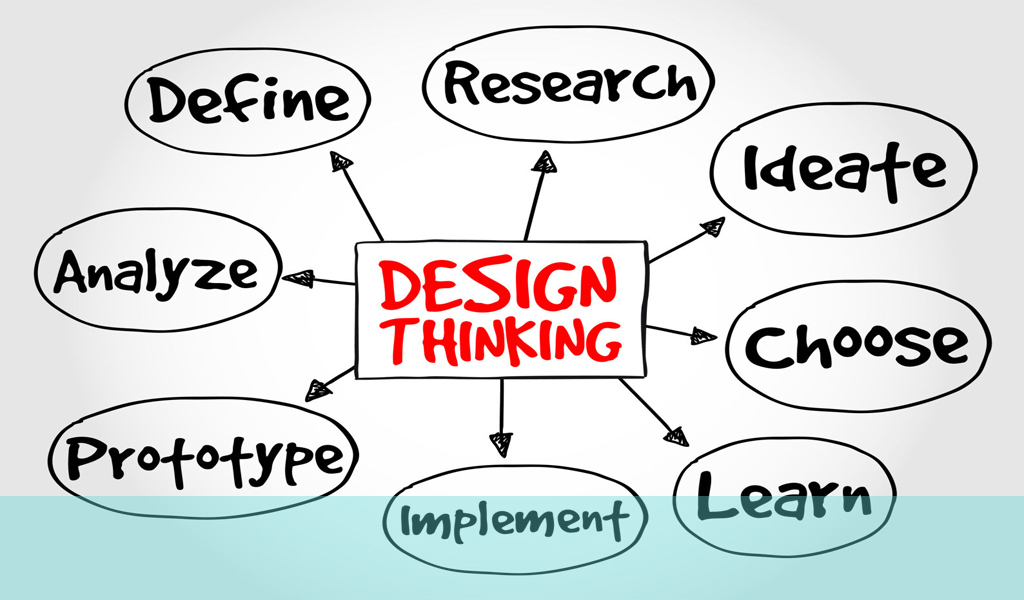
Much discussion surrounds the validity of the Double Diamond design process in the current UX landscape; even the British Design Council have recognised that it’s time for an overhaul, making significant updates.
Here at UX24/7, we’re still a big believer in the system. Why? As one of our colleagues regularly reminds us, ‘getting left of the idea’ is where we find the problems we didn’t know needed solving—and what is user research for if not locating and solving problems?
When product owners aren’t quite sure what they should be building—because all they have is an idea—they often start in the middle, building for building’s sake, armed only with assumptions and the hope that they’ll deliver what their hopeful users need to turn a profit. They won’t necessarily have a plan showing the reasons and direction of where to start.
That’s where the design management set out by the Double Diamond comes into its own.
The Double Diamond design process caters to plenty of user research and research data, building on users’ needs and personas, gearing up to explore the many potential right solutions, and streamlining them into a single, thoroughly considered and highly developed outcome.
Today, we explain why we believe it’s still such a valid system within design thinking and the UX research process and how design teams can benefit from the exploratory research its discovery phase continues to deliver.
Definition of the UX Double Diamond design process model
According to the Design Council:
The Double Diamond is a visual representation of the design and innovation process. It’s a simple way to describe the steps taken in any design and innovation project, irrespective of methods and tools used.
History and evolution of the UX Double Diamond
- 1940: Alex Osborn, an advertising agency owner, starts exploring the creative process of problem-solving, writing several books on the subject.
- 1952: Osborn introduces a single diamond version with divergent and convergent stages of generated and focussed options.
- Working with Sidney Parnes, he developed the idea into the Osborn-Parnes Creative Problem Solving Process (or CPS).
- 1967: After Osborn’s death, Parnes expanded the visual model to five diamonds: fact-finding, problem-finding, idea-finding, solution-finding, and acceptance-finding.
- 1996: Béla Bánáthy, a Hungarian linguist and systems scientist, used a double diamond process to communicate systems design.
- Early 2000s: Nigel Cross, a design educator and researcher, explored the divergent/convergent nature of design-doing and -thinking and applied it to the previous efforts of those before him.
- 2004: The UK Design Council became responsible for promoting the Double Diamond throughout the design environment of the time.
- 2019: The Design Council delivers an updated version—the Framework for Innovation—as a non-linear process, considering leadership, diversity, differences, and complex environmental issues, developing and re-examining at every stage and opportunity while prioritising users, partners, and stakeholders.
- 2021: The Design Council introduces a Systemic Design Framework on the back of their publication, Beyond Net Zero: A Systemic Approach.
Systemic Design Framework
As described by Cat Drew (one of the Design Council’s team behind Beyond Net Zero and their new framework), the Systemic Design Framework is an evolution of the Design Council’s frameworks, starting with the Double Diamond and its reworked 2019 Framework for Innovation.
It recognises how much the world has changed and the design process within it. With AI, net zero, health matters, biodiversity, resources, environmental needs, and more, the simplicity of the Double Diamond struggles with so much additional input from such a complex modern environment. For Drew’s explanation of how it came to be, her blog, Developing our new Systemic Design Framework, is fascinating (and far more concise than we could ever hope to replicate).
Understanding the principles of the Double Diamond
As the UK Design Council states, the Double Diamond has four core principles:
- Put people first – Understand who they are and what they need.
- Communicate visually and inclusively – To share the understanding of problems and ideas.
- Collaborate and co-create – Work with others to develop inspiration and new ideas.
- Iterate, iterate, iterate – Repeating processes to eliminate errors and risks and build confidence.
Divergent and convergent thinking in the Double Diamond process
Dictionary definitions give us the following:
- Divergent: Tending to be different or developing in different directions
- Convergent: Coming closer together; converging
So, within the design process, divergent thinking allows a free flow of ideas, as many are worthy of consideration. It inspires innovation, creativity, and what’s initially expected from the product. It’s non-linear, so it inspires alternatives, adding even more ideas to the pot.
However, to structure this influx of options, convergent thinking focuses on bringing them all together in a linear process, taking inspiration from all possible ideas and focusing them into one all-encompassing solution.
Both diamonds are split into divergent and convergent halves, welcoming abundant options and information to streamline into a single, defined result.

Applying the Double Diamond to problem-solving and systems design
The Double Diamond design process provides a visual guide for more than just product owners. The model can be applied to all kinds of systems and services and, as suggested, should be adapted wherever needed to fit the challenge the designers face.
Role of the Double Diamond in service design, UX design, and product development
Service design and UX share the belief that better experiences make happier users, customers, and employees, which convert to better engagement, higher rewards, and improved revenues. The service design process is regularly built on a double diamond system, although labelled slightly differently.
In each area, the process is essential to delivering the best outcomes while ensuring they clearly communicate design phases and reasons for them to non-designers and stakeholders.
The Problem Space vs. Solution Space
The Double Diamond model represents both sides of creative thinking. The left diamond—the problem space—is about casting our net wide to explore potential issues, wants, and needs of users, partners, and shareholders. We can detail what we need to build by bringing them all together.
In the right diamond—the solution space—design teams consider their wide net of solution options before pulling them into one neat, final design.
These two halves of the Double Diamond cater to its mantra: solve the right problem and solve the problem right. Here’s how.
Exploring the importance of solving the right problem: the ‘discover phase’ in diamond 1
The first diamond ‘explores, synthesises, and defines’ the problems we need to solve. We do this through the usual tools and UX research methods and in line with the divergent and convergent thinking the model dictates.
Nobody has a crystal ball when it comes to understanding the hurdles designers need to overcome and no one person has the insight that can match hard data that only systematic research provides. With plenty of newly uncovered research data to consider, we can be sure we’re solving the right problem.
Understanding how to solve the problem right: the ‘develop phase’ in diamond 2
Moving from the problem space, our mantra changes to ‘solving the problem right’. In the solution space, we ‘visualise, iterate, and experiment’ to explore all the possibilities, then test potential solutions to hone in on the best, combined option. Designing solutions isn’t as clear cut as you’d like to think, with so many different needs, personas, and partners to satisfy.
Breaking down the 4 phases of the Double Diamond model
With the two diamonds split in half, we see the four distinct phases of its design process: discover, define, develop and deliver.
Discover phase – Researching and understanding user needs and pain points
The first diamond’s divergent thinking section helps us understand where the problems are instead of assuming we know what the problem is.
Define phase – Synthesizing research findings into actionable insights
The convergent thinking section of the first diamond helps us redefine the challenge from the insights gained from our research methods.
Develop phase – Ideating and prototyping potential solutions
The develop phase is the convergent thinking section of the second diamond, where the design team explores the many possible design solutions. Introducing various prototypes to solve a well-defined problem encourages co-design, delivering optimum design solutions.
Deliver phase – Implementing and testing the final solution
The deliver phase requires us to test potential solutions until we can narrow down our best performers. Refining and re-testing, not just in the delivery phase but through the whole process, allows continuing adaptation, improvement, and fine-tuning so that when we arrive at the final product, we can be confident that we’ve covered all possible bases.
As much as the Double Diamond looks like a linear process, refining through further research and testing—within every section of each stage—shows us that it’s far more flexible than it appears.
Design Thinking and the Double Diamond process
Design Thinking is another process model that ties closely to the principles of the Double Diamond. While both centre around similar principles, Standford Design School developed the Design Thinking system as a teaching aid for non-designers in the 1990s. By 2015, a group of former Standford professors monetised Design Thinking as an educational product sold through their design consultancy IDEO.
Summing up
Despite its origins dating back decades, there’s still much to harness from the Double Diamond. UX designers and researchers continue to reap the benefits of determining and solving the right problems the right way, while its philosophers and developers look to the future and the ways it can better fit in an increasingly complex world. Undoubtedly, it still has its place in the design process, but it will be fascinating to watch it develop over the coming years or what the next big thing might be that could replace it.
If you would like to know more about getting left of the idea, email us at hello@ux247.com.



[…] not read our dedicated page in the UX24/7 Knowledge Base to learn more about the Double Diamond […]